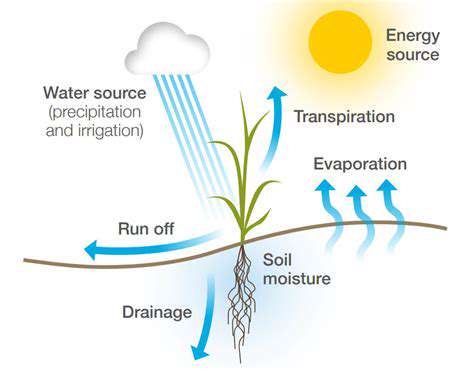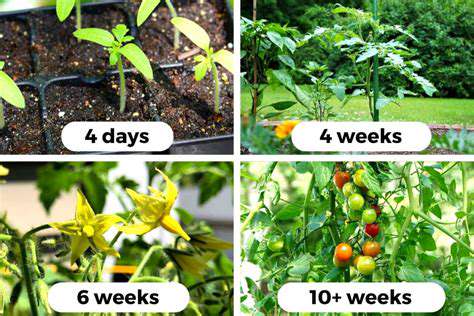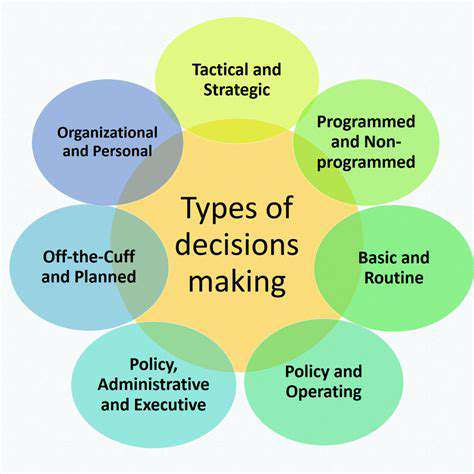How to Deal with Common Plant Pests
Harnessing Beneficial Insects
Garden pests often have natural predators, and introducing these helpful insects offers an eco-friendly pest control solution. Ladybugs, for instance, aggressively consume aphids, mites, and similar soft-bodied pests. Supporting populations of these natural predators proves more sustainable than chemical pesticides, which can damage beneficial insects and disrupt your garden's delicate ecosystem balance. Establishing habitats that draw these helpful creatures, such as planting flowers that serve as food sources, remains essential for their survival and pest control effectiveness.
Lacewings represent another valuable group of beneficial insects. These delicate creatures excel at managing aphids, mealybugs, and other small pests. They're relatively simple to attract by cultivating flowering plants they prefer. Learning about these insects' life cycles and behaviors helps create an environment where they thrive, decreasing reliance on harmful pesticides.
Using Natural Barriers and Repellents
Physical barriers like row covers effectively block pests from reaching plants. This straightforward technique creates an impenetrable shield protecting crops from insect damage. Row covers work especially well for safeguarding vulnerable seedlings and young plants against common pests. Beyond row covers, mulch serves as another effective barrier, suppressing weeds while preventing insect infestations. Mulch additionally retains moisture, critical for healthy plant growth and pest resistance.
Natural repellents also offer effective pest control alternatives. Certain plants, including marigolds and garlic, naturally deter various pests. Planting these strategically around your garden forms a natural defensive perimeter, reducing chemical dependency. Natural sprays containing neem oil or chili pepper solutions can also repel pests when applied properly, avoiding harm to beneficial insects or the environment.
Strengthening Plant Health for Pest Resistance
Vigorous, healthy plants typically resist pest infestations better. Providing proper nutrition, adequate water, and optimal growing conditions helps plants develop stronger natural defenses. This includes regular fertilization to ensure nutrient availability and maintaining appropriate soil moisture levels. Well-nourished plants experience less stress, making them less vulnerable to pest attacks. Regular inspections for nutrient deficiencies or disease symptoms remain crucial for maintaining plant health and preventing infestations.
Proper plant spacing significantly impacts pest resistance too. Allowing sufficient space between plants improves airflow and reduces humidity, conditions that often encourage pest reproduction. This spacing strategy also facilitates easier pest monitoring, enabling early intervention to minimize damage. Creating a supportive environment through attentive care dramatically reduces pest infestation likelihood.
Cultural Practices for Pest Prevention: Growing a Healthy Garden
Traditional Practices and Indigenous Wisdom
Many cultures maintain time-honored traditions focused on garden pest prevention. These typically involve understanding local ecosystems and employing natural methods. Some indigenous communities practice companion planting, strategically positioning certain plants together to repel pests or attract beneficial insects. This generational knowledge often reflects deep understanding of regional plants and pests, offering modern gardeners valuable insights.
Beyond companion planting, many cultures use natural pest control methods like neem oil or other plant-based repellents. These practices generally minimize synthetic chemical use, emphasizing environmental harmony and crop respect.
The Role of Beneficial Insects and Predators
Recognizing garden pests' natural predators proves essential for healthy gardening. Many insects, including ladybugs and lacewings, aggressively consume aphids, mites, and other common pests. Creating habitats that attract these beneficial insects, through flowering plants and limited pesticide use, can naturally reduce pest populations significantly.
Encouraging insect diversity, including beneficial species and natural predators, remains vital for maintaining garden ecosystem balance. These predators often play critical roles in controlling pest populations naturally.
Companion Planting for Pest Deterrence
Strategic companion planting serves as a powerful pest prevention tool. Certain plants emit scents or produce compounds that deter specific pests. For example, planting marigolds near vegetables helps repel nematodes and other soil-dwelling pests. Understanding which plants repel which pests and incorporating these pairings into garden design can substantially minimize pest problems.
Mulching and Soil Health Practices
Healthy soil forms the foundation of a robust garden. Proper soil management practices, including mulching, help create environments less hospitable to pests. Mulch retains moisture, suppresses weeds, and regulates soil temperature, all contributing to healthier, more pest-resistant plants.
Using organic mulch benefits soil while creating habitats for beneficial organisms that help control pests. This holistic approach considers the entire garden ecosystem's interconnectedness, fostering sustainability and resilience.
Using Natural Repellents and Traps
Natural pest repellents like garlic sprays, pepper solutions, or citrus peels can effectively deter certain pests. These methods often provide safer alternatives to harsh chemical pesticides while maintaining effective control. Researching and implementing natural repellents helps minimize synthetic chemical use while promoting healthy plant growth.
Physical traps, such as sticky traps for flying insects, can also help manage pest populations. These methods often complement other natural strategies, creating a multifaceted pest prevention approach.
Panic attacks can cause nasal congestion, potentially worsening anxiety symptoms.
Preventing Future Infestations: Taking Proactive Steps

Preventing Future Infestations: Proactive Measures
Effective pest control extends beyond addressing current infestations; implementing proactive measures prevents future problems. Understanding pest entry points and habits proves essential for creating environments that discourage their presence. This proactive approach involves sealing cracks and maintaining proper property sanitation.
Regular inspections remain crucial for early problem identification. Checking for pest activity signs like droppings or gnaw marks allows intervention before issues escalate. This vigilance enables swift action, minimizing damage and pest spread.
Habitat Modification: Creating Unwelcoming Environments
Modifying your property to discourage pests forms a critical prevention component. This includes removing potential food sources like decaying matter, spilled food, and pet waste. Proper food storage and sanitation practices prove vital for long-term pest control success.
Eliminating breeding grounds remains equally important. Since pests require suitable environments, controlling moisture sources like leaky pipes or standing water significantly reduces infestation likelihood. Regular maintenance and prompt repairs serve as key strategies.
Professional Pest Control Services: Expert Assistance
While many preventative measures can be implemented independently, professional pest control services offer specialized knowledge and tools that enhance efforts. Professionals can identify specific pest types and recommend tailored solutions addressing their unique needs and behaviors. This expertise proves invaluable for long-term prevention and targeting infestation root causes.
Professional services often utilize advanced techniques and products unavailable to homeowners. They provide comprehensive property assessments and customized plans addressing vulnerabilities to prevent future infestations. This proactive approach significantly reduces future pest problem risks.
Maintaining Healthy Landscapes: Pest Barriers
Maintaining healthy, well-kept landscapes plays a crucial role in pest prevention. Overgrown yards provide ideal pest hiding spots and breeding grounds, increasing infestation vulnerability. Regular maintenance including bush trimming, debris removal, and proper lawn care creates unwelcoming environments for pests.
Proper watering practices also matter. Overwatering creates damp conditions that attract pests. Ensuring adequate drainage and appropriate watering significantly reduces property appeal to pests. These simple measures contribute to more robust, resilient landscapes.









![How to Use AI Tools for Studying Effectively [Ethics]](/static/images/31/2025-05/MitigatingPotentialEthicalConcernsAssociatedwithAIStudyTools.jpg)

